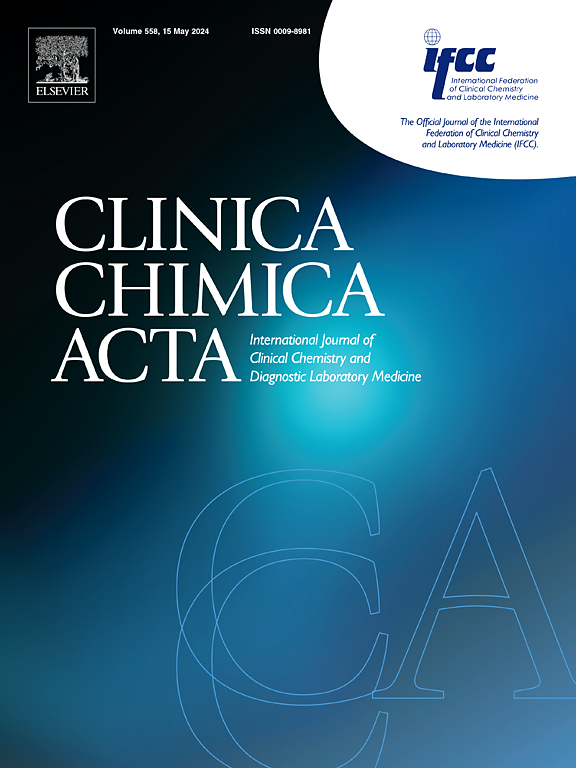Aptamer-based biosensors for troponin detection
IF 2.9
3区 医学
Q2 MEDICAL LABORATORY TECHNOLOGY
引用次数: 0
Abstract
Cardiac troponin is recognized as a valuable diagnostic for the early detection of acute myocardial infarction. Biosensors are great alternatives to electrocardiograms, chest X-rays, and other laboratory-based immunoassays because they can detect increased levels of cardiovascular protein biomarkers in the blood right after a myocardial infarction. They are also ideal for use as point-of-care platforms. Aptamers provide a compelling alternative to antibodies for analytical applications. Recently, aptamer-based biosensors, or aptasensors, have garnered significant attention for their ability to provide accessible and sensitive detection of cardiac troponin. This review presents a clear and concise overview of the recent advancements in various types of aptasensors, including fluorescence, surface plasmon resonance, colorimetric methods, surface-enhanced Raman scattering, electrochemical detection, and lateral flow assays, all developed for the determination of troponin.
基于适配体的肌钙蛋白检测生物传感器。
心肌肌钙蛋白被认为是一种有价值的诊断早期检测急性心肌梗死。生物传感器是心电图、胸部x光和其他基于实验室的免疫分析的绝佳替代品,因为它们可以检测心肌梗死后血液中心血管蛋白生物标志物的水平升高。它们也非常适合用作即时护理平台。适配体为分析应用提供了一种令人信服的抗体替代品。最近,基于适配体的生物传感器,或称适配体传感器,因其提供易于获取和敏感的心肌肌钙蛋白检测的能力而引起了极大的关注。本文简要介绍了各种类型的适体传感器的最新进展,包括荧光、表面等离子体共振、比色法、表面增强拉曼散射、电化学检测和横向流动测定,这些都是用于测定肌钙蛋白的。
本文章由计算机程序翻译,如有差异,请以英文原文为准。
求助全文
约1分钟内获得全文
求助全文
来源期刊

Clinica Chimica Acta
医学-医学实验技术
CiteScore
10.10
自引率
2.00%
发文量
1268
审稿时长
23 days
期刊介绍:
The Official Journal of the International Federation of Clinical Chemistry and Laboratory Medicine (IFCC)
Clinica Chimica Acta is a high-quality journal which publishes original Research Communications in the field of clinical chemistry and laboratory medicine, defined as the diagnostic application of chemistry, biochemistry, immunochemistry, biochemical aspects of hematology, toxicology, and molecular biology to the study of human disease in body fluids and cells.
The objective of the journal is to publish novel information leading to a better understanding of biological mechanisms of human diseases, their prevention, diagnosis, and patient management. Reports of an applied clinical character are also welcome. Papers concerned with normal metabolic processes or with constituents of normal cells or body fluids, such as reports of experimental or clinical studies in animals, are only considered when they are clearly and directly relevant to human disease. Evaluation of commercial products have a low priority for publication, unless they are novel or represent a technological breakthrough. Studies dealing with effects of drugs and natural products and studies dealing with the redox status in various diseases are not within the journal''s scope. Development and evaluation of novel analytical methodologies where applicable to diagnostic clinical chemistry and laboratory medicine, including point-of-care testing, and topics on laboratory management and informatics will also be considered. Studies focused on emerging diagnostic technologies and (big) data analysis procedures including digitalization, mobile Health, and artificial Intelligence applied to Laboratory Medicine are also of interest.
 求助内容:
求助内容: 应助结果提醒方式:
应助结果提醒方式:


